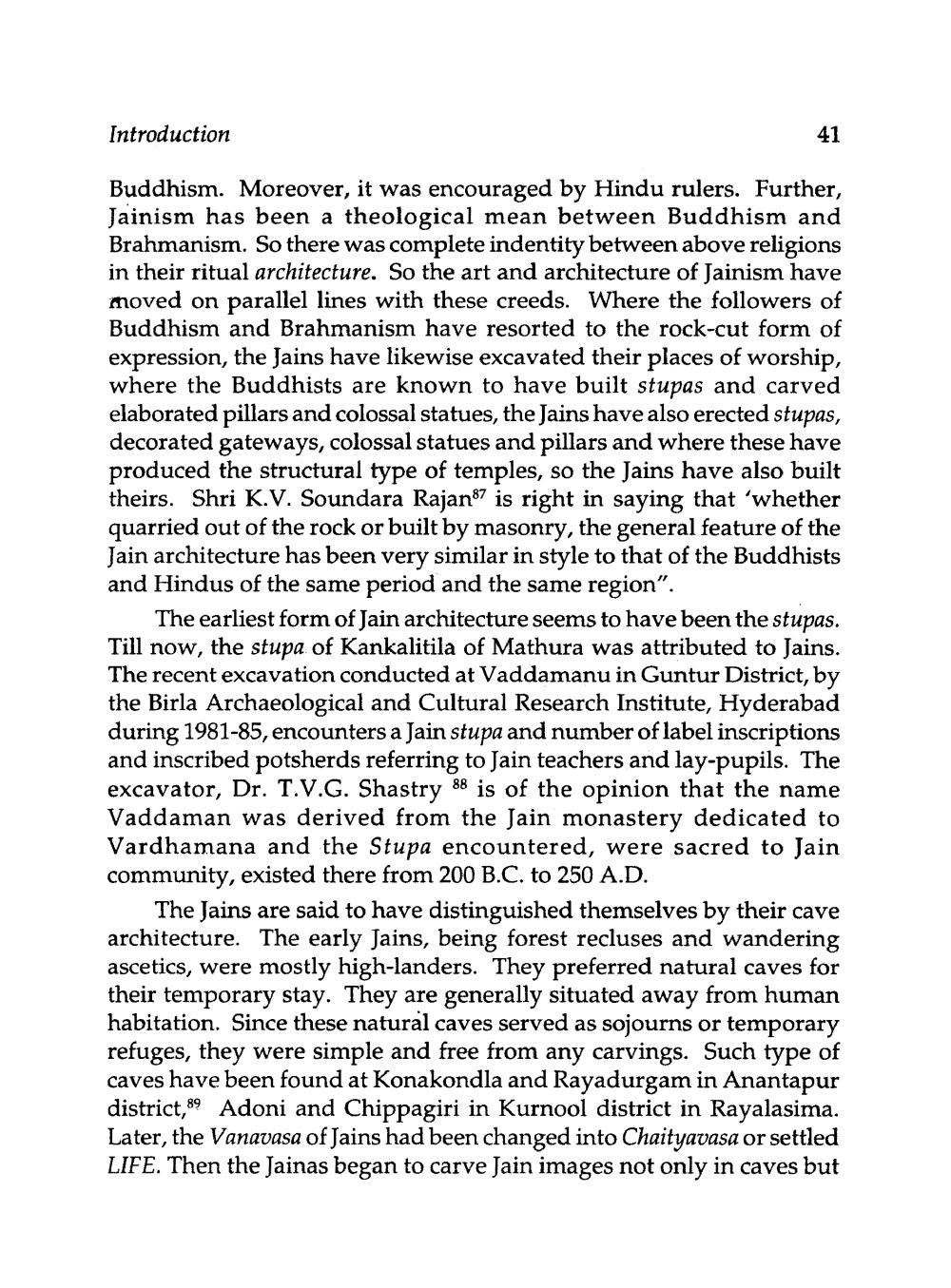________________
Introduction
Buddhism. Moreover, it was encouraged by Hindu rulers. Further, Jainism has been a theological mean between Buddhism and Brahmanism. So there was complete indentity between above religions in their ritual architecture. So the art and architecture of Jainism have moved on parallel lines with these creeds. Where the followers of Buddhism and Brahmanism have resorted to the rock-cut form of expression, the Jains have likewise excavated their places of worship, where the Buddhists are known to have built stupas and carved elaborated pillars and colossal statues, the Jains have also erected stupas, decorated gateways, colossal statues and pillars and where these have produced the structural type of temples, so the Jains have also built theirs. Shri K.V. Soundara Rajan87 is right in saying that 'whether quarried out of the rock or built by masonry, the general feature of the Jain architecture has been very similar in style to that of the Buddhists and Hindus of the same period and the same region".
41
The earliest form of Jain architecture seems to have been the stupas. Till now, the stupa of Kankalitila of Mathura was attributed to Jains. The recent excavation conducted at Vaddamanu in Guntur District, by the Birla Archaeological and Cultural Research Institute, Hyderabad during 1981-85, encounters a Jain stupa and number of label inscriptions and inscribed potsherds referring to Jain teachers and lay-pupils. The excavator, Dr. T.V.G. Shastry 88 is of the opinion that the name Vaddaman was derived from the Jain monastery dedicated to Vardhamana and the Stupa encountered, were sacred to Jain community, existed there from 200 B.C. to 250 A.D.
The Jains are said to have distinguished themselves by their cave architecture. The early Jains, being forest recluses and wandering ascetics, were mostly high-landers. They preferred natural caves for their temporary stay. They are generally situated away from human habitation. Since these natural caves served as sojourns or temporary refuges, they were simple and free from any carvings. Such type of caves have been found at Konakondla and Rayadurgam in Anantapur district,89 Adoni and Chippagiri in Kurnool district in Rayalasima. Later, the Vanavasa of Jains had been changed into Chaityavasa or settled LIFE. Then the Jainas began to carve Jain images not only in caves but




